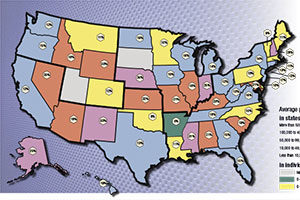U.S. food-animal veterinary service is inexcess supply, according to a new report publishedby the American Veterinary Medical Association(AVMA).
Click hereto access the Center for Health Workforce Studies report for the American Veterinary Medical Association in its entirety.
Excess capacity for all vet services, includingsmall-animal practices, in the U.S. was 12.5percent last year. Food-animal vet serviceoversupply was slightly higher at 15 percent, thereport found. The study defined food-animalveterinarians as any practitioner consulting withdairy, beef, swine, poultry or sheep operations.
Based on surveys collected for the report,about 4,990 full-time equivalent veterinarianswere caring for dairy cows in 2012, or one per1,800 cows in the U.S. The report estimates theactual demand for dairy vets was 4,330 full-timeequivalent positions, a current oversupply of 15.2percent.
The largest percentage of food-animal vetservice oversupply was in the Southwest. Stateswith more than 500,000 dairy cows, includingCalifornia, Wisconsin, New York, Idaho andPennsylvania, ran an average oversupply of foodanimal services of 14 percent, slightly lower thanthe national average.
Click hereor on the image at right to download a PDF showing a state-by-state breakdown.
The American Association of BovinePractitioners said the report validates the claim ithas made for years.
“The finding that there will be double-digitunderutilization of veterinary services over thenext decade supports what the AABP ad hoc RuralVeterinary Practice Committee discovered, whichis that there is no longer a shortage of food-animalveterinarians but a problem of distributionand practice viability in certain underservedgeographical areas,” Dr. David Welch of AABP’sVeterinary Practice Sustainability Committee saidin a statement following the report’s release. PD






